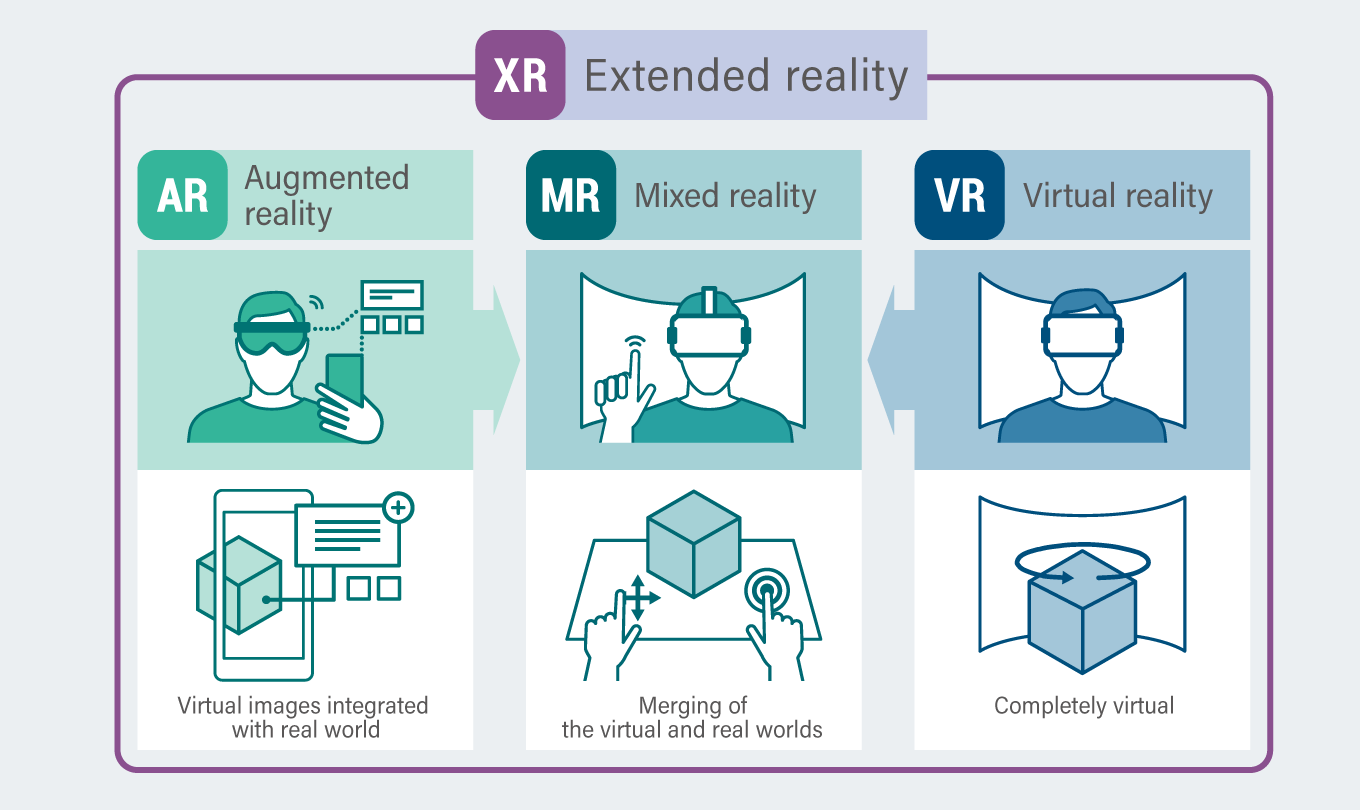Competition Heats Up: Analyzing The Leading Platforms In The AI-Driven XR Market

Table of Contents
Leading AI-Driven XR Platforms: A Comparative Overview
Several key players are vying for dominance in the AI-driven XR market. Each platform offers unique strengths and faces distinct challenges. Let's examine some of the leading contenders:
Platform A: Meta/Facebook: Strengths and Weaknesses
- Market dominance and user base: Meta boasts a massive user base and established presence in social media, providing a significant advantage in potential XR adoption. Their extensive network offers a readily available audience for new VR and AR applications.
- Strengths in VR hardware and software development tools: Meta's Oculus Quest line represents a significant step forward in consumer-friendly VR hardware. Their robust software development kits (SDKs) empower developers to create high-quality VR experiences.
- Limitations in AI integration compared to competitors: While Meta is investing heavily in AI, some competitors currently exhibit more advanced AI integration within their XR platforms. This includes features like more sophisticated object recognition and natural language processing.
- Focus on social VR and metaverse initiatives: Meta's ambitious metaverse project aims to create persistent, shared virtual worlds. This initiative will heavily rely on advanced AI to manage interactions and create realistic virtual environments.
- AI features: Meta's AI powers features like realistic avatar creation, enabling users to design personalized representations within their virtual spaces. AI also plays a role in facilitating more natural and intuitive interactions between avatars.
Platform B: Microsoft: Strengths and Weaknesses
- Strong focus on enterprise solutions and AR applications: Microsoft's HoloLens, along with its Azure cloud services, is leading the way in enterprise-grade AR applications. This focus on professional use cases provides a strong revenue stream and positions Microsoft as a key player in industrial applications of XR technology.
- Advanced AI capabilities integrated into HoloLens and Azure cloud services: Microsoft leverages its advanced AI capabilities, including Azure Cognitive Services, to enhance HoloLens functionality. This seamless integration provides powerful AI-driven features for industrial applications and enterprise solutions.
- Strengths in spatial computing and industrial applications: Microsoft's expertise in spatial computing is a major asset. HoloLens excels in overlaying digital information onto the real world, enhancing productivity and efficiency in various industrial settings.
- Potential limitations in consumer-facing VR market penetration: While Microsoft focuses on enterprise, its consumer-facing VR market presence is comparatively less dominant than Meta's. This limits its reach within the broader consumer market.
- AI features: AI powers HoloLens' object recognition, allowing it to identify and interact with real-world objects. Spatial mapping features utilize AI to build 3D models of physical environments, enabling users to interact with digital content in context.
Platform C: Apple: Strengths and Weaknesses (Potential Future Player)
- Potential future market entry and impact: Apple's potential entry into the XR market is highly anticipated. Their reputation for user-friendly design and high-quality hardware promises to significantly impact the industry.
- Rumored focus on AR and integration with existing Apple ecosystem: Speculation points toward Apple focusing on augmented reality, seamlessly integrating it with existing Apple devices and services. This could create a powerful and user-friendly AR experience.
- Strengths in user experience design and hardware innovation: Apple's expertise in user experience and hardware innovation gives them a significant advantage. They could potentially set a new standard for user-friendly and intuitive AR experiences.
- Uncertainties regarding AI capabilities and market strategy: The specifics of Apple's AI strategy for XR remain unclear, making it difficult to assess their competitive advantage in this area.
- Speculation on future AI features: Potential AI features could include advanced object recognition, real-time translation, and personalized AR experiences tailored to individual user preferences.
Emerging Players and Niche Technologies
Beyond the established players, several smaller companies are making significant contributions to the AI-driven XR market. These include companies specializing in AI-powered content generation, real-time translation within XR environments, and innovative input methods. These emerging players are pushing boundaries and developing niche technologies that could disrupt the market.
Key AI Technologies Driving XR Innovation
Several key AI technologies are fueling the rapid advancements in AI-driven XR:
Computer Vision and Object Recognition
Computer vision enables XR systems to "see" and understand their environment. This allows for more realistic interactions with the real world, enhancing immersion and enabling new applications. For example, AI-powered object recognition allows users to interact with virtual objects as if they were physical, enhancing the sense of presence in XR experiences.
Natural Language Processing (NLP) and Conversational AI
NLP allows for more natural and intuitive interaction with XR applications. Voice commands, virtual assistants, and conversational interfaces enhance accessibility and usability, making XR technology more user-friendly. AI-powered chatbots can provide guidance and support within virtual environments, improving the overall user experience.
Deep Learning and Generative AI for Content Creation
Deep learning and generative AI are revolutionizing 3D content creation for XR applications. These technologies accelerate the process of generating realistic virtual environments, characters, and objects, making it faster and easier to create high-quality immersive experiences. Generative AI is particularly useful for creating varied and realistic virtual worlds, reducing the need for extensive manual design.
The Future of AI-Driven XR: Trends and Predictions
The AI-driven XR market is poised for significant growth. We can expect to see widespread adoption across various sectors, including gaming, healthcare, education, and training. Future advancements in AI technologies will drive further innovation, leading to more immersive, realistic, and interactive experiences. However, challenges remain, including addressing ethical considerations and ensuring responsible AI development within XR applications.
Conclusion:
The AI-driven XR market is a dynamic and fiercely competitive landscape. While platforms like Meta, Microsoft, and potential future players like Apple are shaping the industry, the rapid evolution of AI technologies promises a future of unprecedented immersion and utility. Understanding the strengths and weaknesses of the leading platforms, as well as the key AI technologies, is crucial for success in this rapidly evolving field. Stay informed about the latest developments in the AI-driven XR market to stay ahead. Explore the different AI XR platforms and discover the power of immersive experiences fueled by cutting-edge AI.

Featured Posts
-
 Atalanta Vs Venezia Prediksi Skor Susunan Pemain Statistik Dan Head To Head Serie A
May 13, 2025
Atalanta Vs Venezia Prediksi Skor Susunan Pemain Statistik Dan Head To Head Serie A
May 13, 2025 -
 How Espn Changed Its Nba Draft Lottery Show
May 13, 2025
How Espn Changed Its Nba Draft Lottery Show
May 13, 2025 -
 Airfocus Acquired By Lucid Software What It Means For Users And The Future Of Work Management
May 13, 2025
Airfocus Acquired By Lucid Software What It Means For Users And The Future Of Work Management
May 13, 2025 -
 Dzherard Btlr 8 Godini S Osinovenoto Mu Blgarsko Kuche
May 13, 2025
Dzherard Btlr 8 Godini S Osinovenoto Mu Blgarsko Kuche
May 13, 2025 -
 Amokalarm Braunschweig Was Wir Ueber Den Vorfall An Der Neuen Oberschule Wissen
May 13, 2025
Amokalarm Braunschweig Was Wir Ueber Den Vorfall An Der Neuen Oberschule Wissen
May 13, 2025
